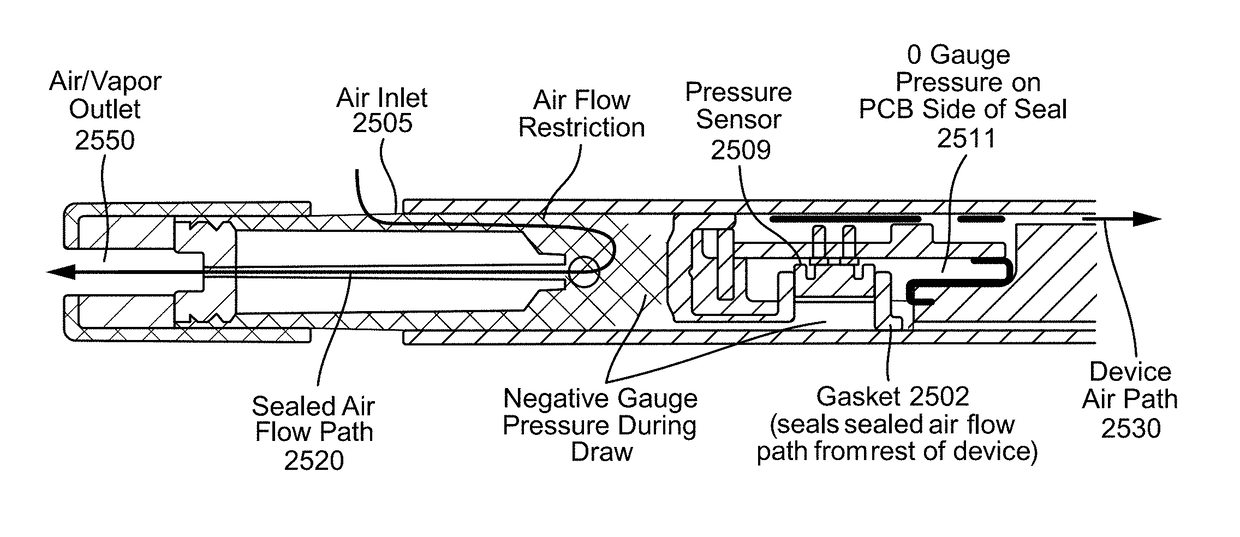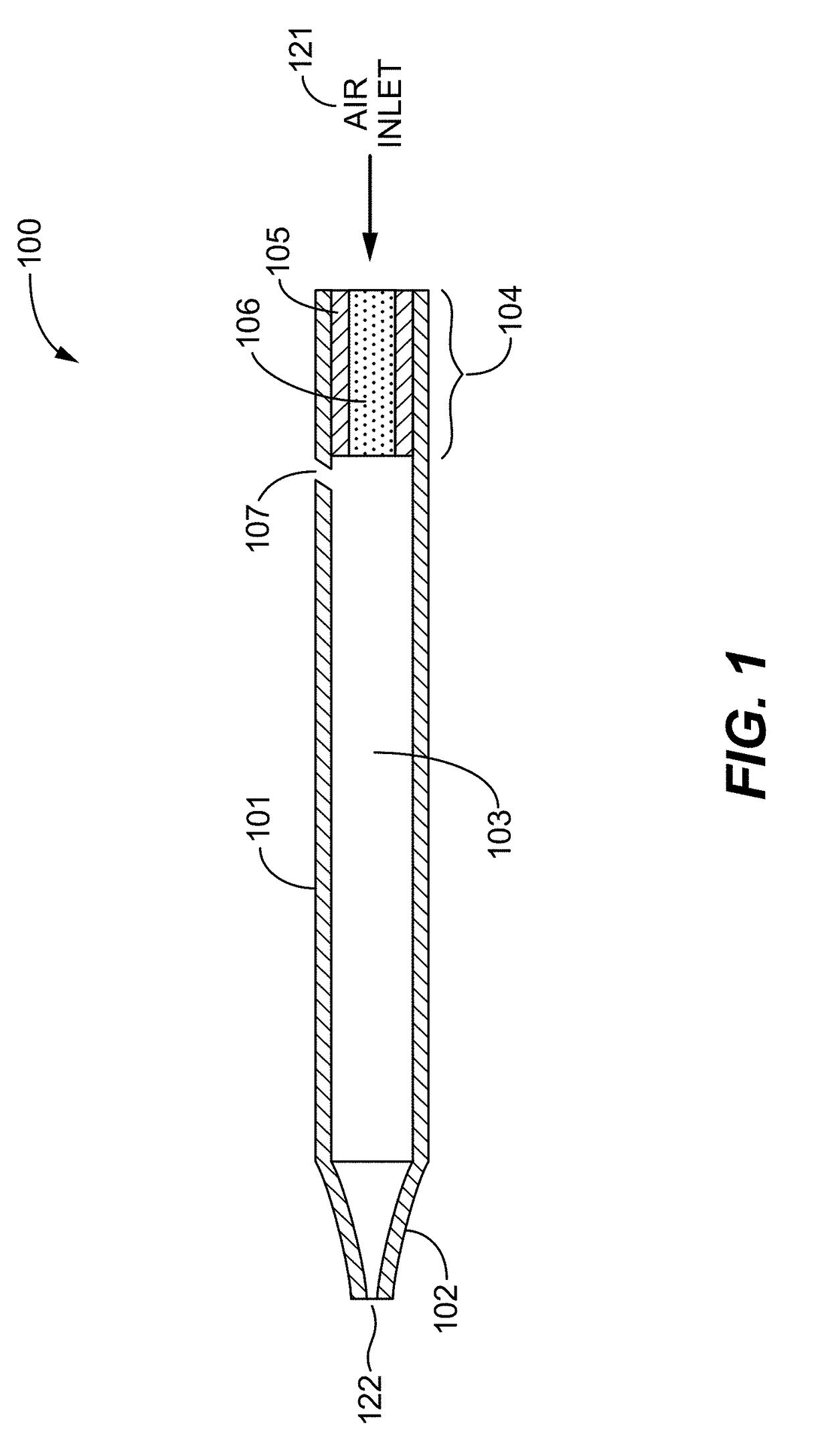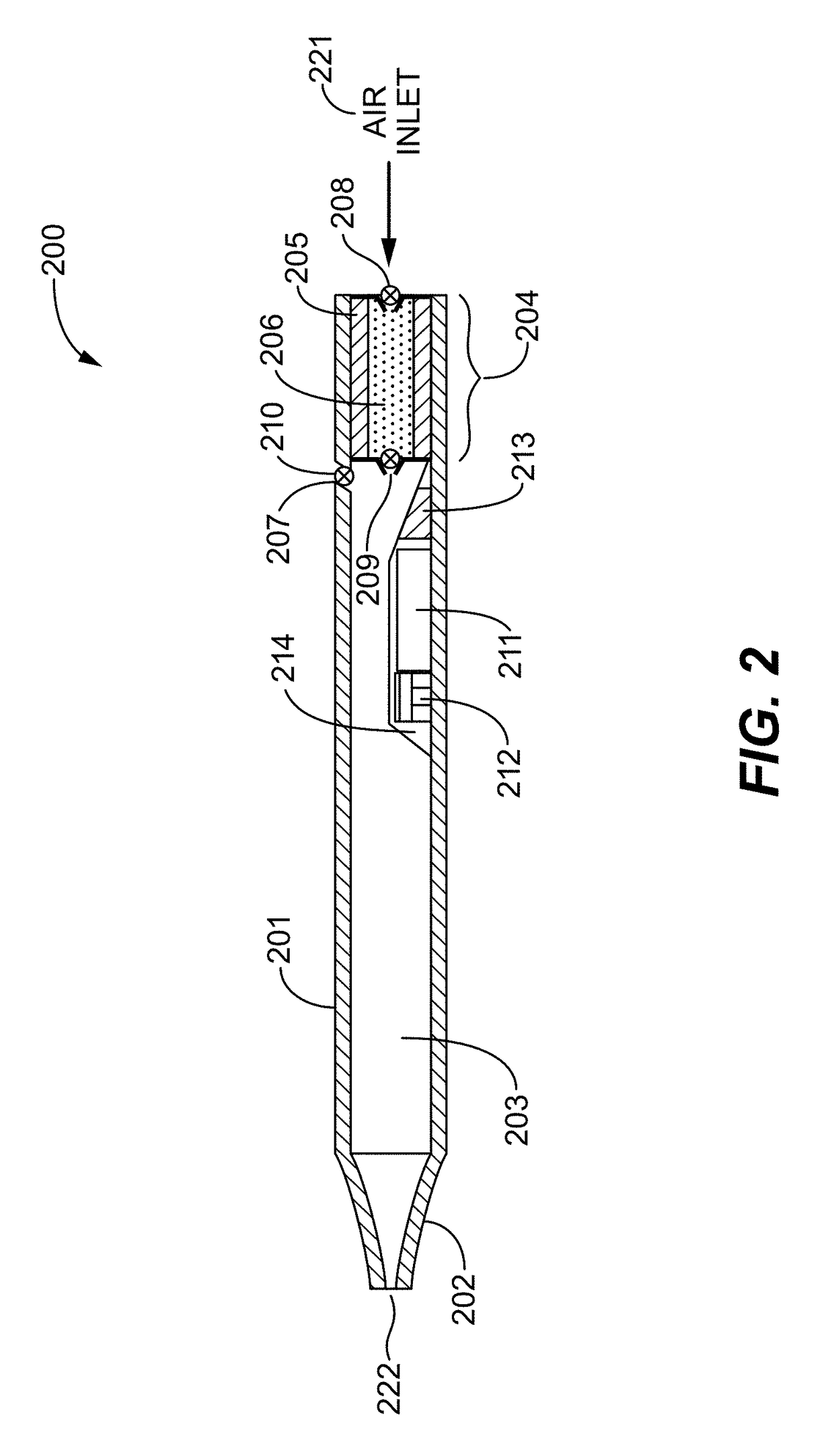Vaporizer devices with blow discrimination
a technology of electronic vaping and vaporizer, which is applied in the direction of fluid pressure measurement, instruments, tobacco, etc., can solve the problems of reducing the life of the battery and the overall device, devices may inadvertently detect a draw or inhalation, and e-juice degradants that taste bad, etc., to achieve the effect of absorbing and dispersing excessive hea
- Summary
- Abstract
- Description
- Claims
- Application Information
AI Technical Summary
Benefits of technology
Problems solved by technology
Method used
Image
Examples
Embodiment Construction
[0106]Provided herein are systems and methods for generating a vapor from a material. The vapor may be delivered for inhalation by a user. The material may be a solid, liquid, powder, solution, paste, gel, or any a material with any other physical consistency. The vapor may be delivered to the user for inhalation by a vaporization device. The vaporization device may be a handheld vaporization device. The vaporization device may be held in one hand by the user.
[0107]The vaporization device may comprise one or more heating elements the heating element may be a resistive heating element. The heating element may heat the material such that the temperature of the material increases. Vapor may be generated as a result of heating the material. Energy may be required to operate the heating element, the energy may be derived from a battery in electrical communication with the heating element. Alternatively a chemical reaction (e.g., combustion or other exothermic reaction) may provide energy...
PUM
| Property | Measurement | Unit |
|---|---|---|
| size | aaaaa | aaaaa |
| size | aaaaa | aaaaa |
| size | aaaaa | aaaaa |
Abstract
Description
Claims
Application Information
 Login to View More
Login to View More - R&D
- Intellectual Property
- Life Sciences
- Materials
- Tech Scout
- Unparalleled Data Quality
- Higher Quality Content
- 60% Fewer Hallucinations
Browse by: Latest US Patents, China's latest patents, Technical Efficacy Thesaurus, Application Domain, Technology Topic, Popular Technical Reports.
© 2025 PatSnap. All rights reserved.Legal|Privacy policy|Modern Slavery Act Transparency Statement|Sitemap|About US| Contact US: help@patsnap.com



